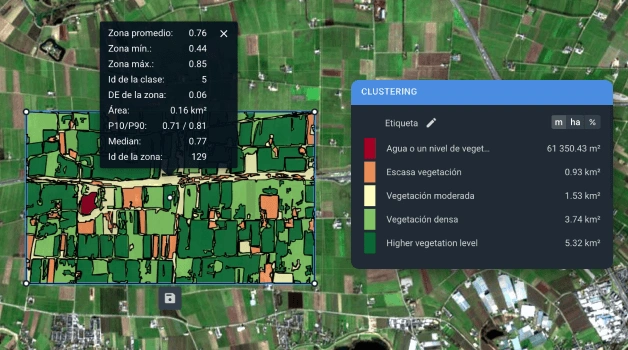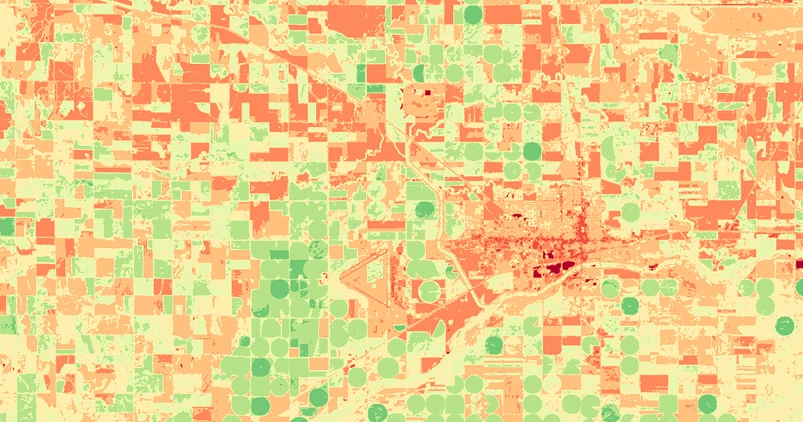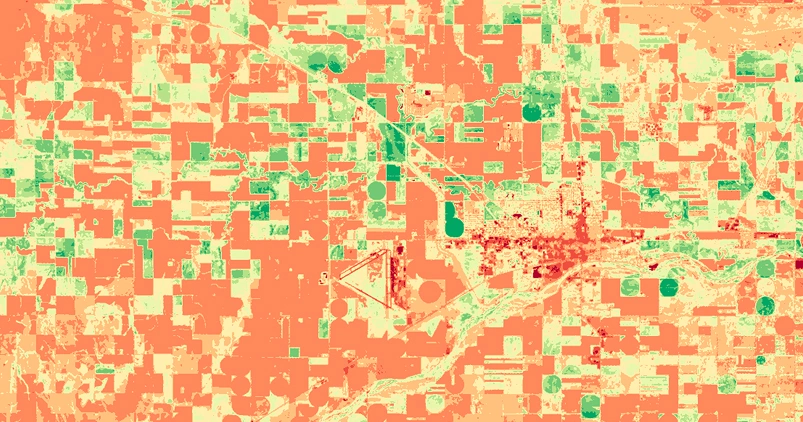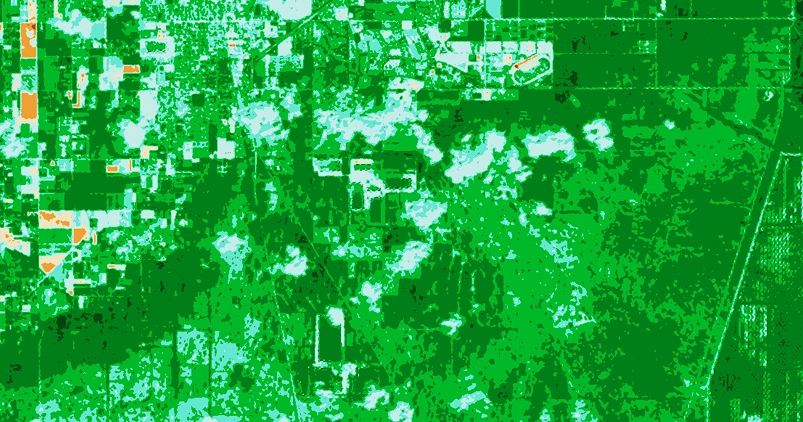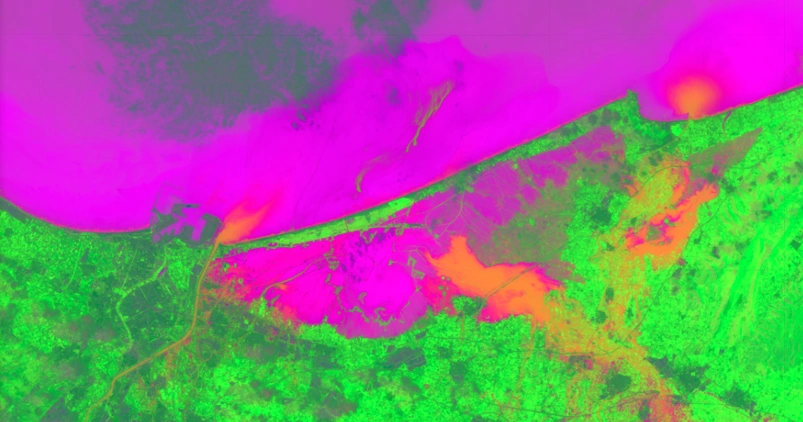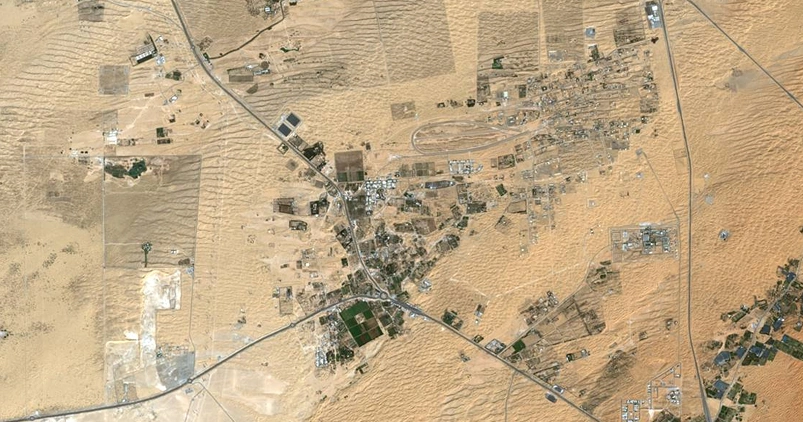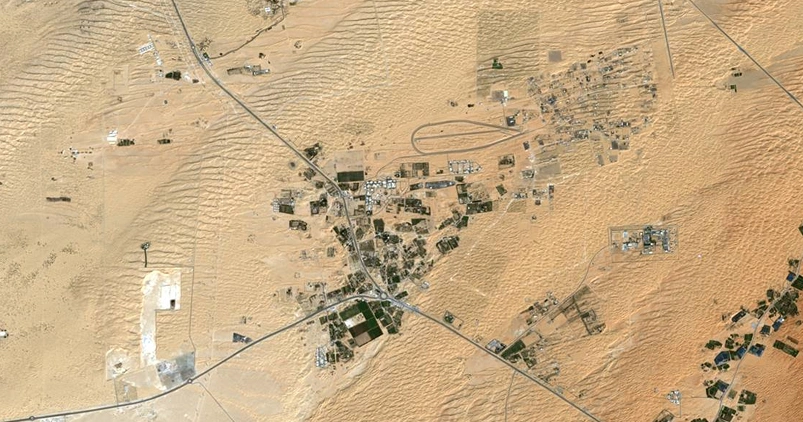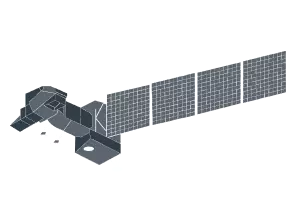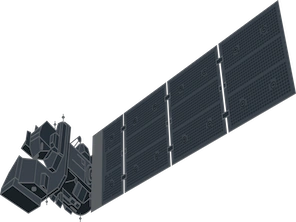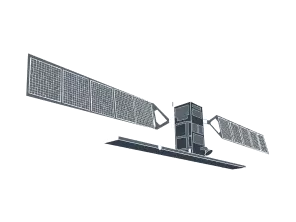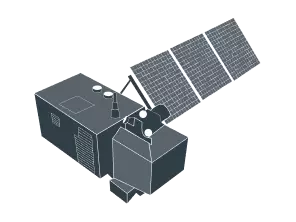Imágenes Landsat 8: Datos Precisos Para Análisis
Obtenga imágenes satelitales multiespectrales de Landsat 8 de barrido ancho, resolución media y alta frecuencia en la plataforma EOSDA LandViewer.
-
Resolución espacial
15 m (pancromática), 30 m (multiespectral), 100 m (térmica)
-
Tamaño de la imagen
185 × 180 km
-
Tiempo de revisita
Cada 16 días
-
Datos de archivo
Desde 2013 hasta la actualidad
-
Bandas espectales
11 bandas, incluyendo la banda costera, NIR, SWIR y térmica
-
Herramientas de análisis
Detección de cambios, agrupación de datos (clustering), análisis de series temporales
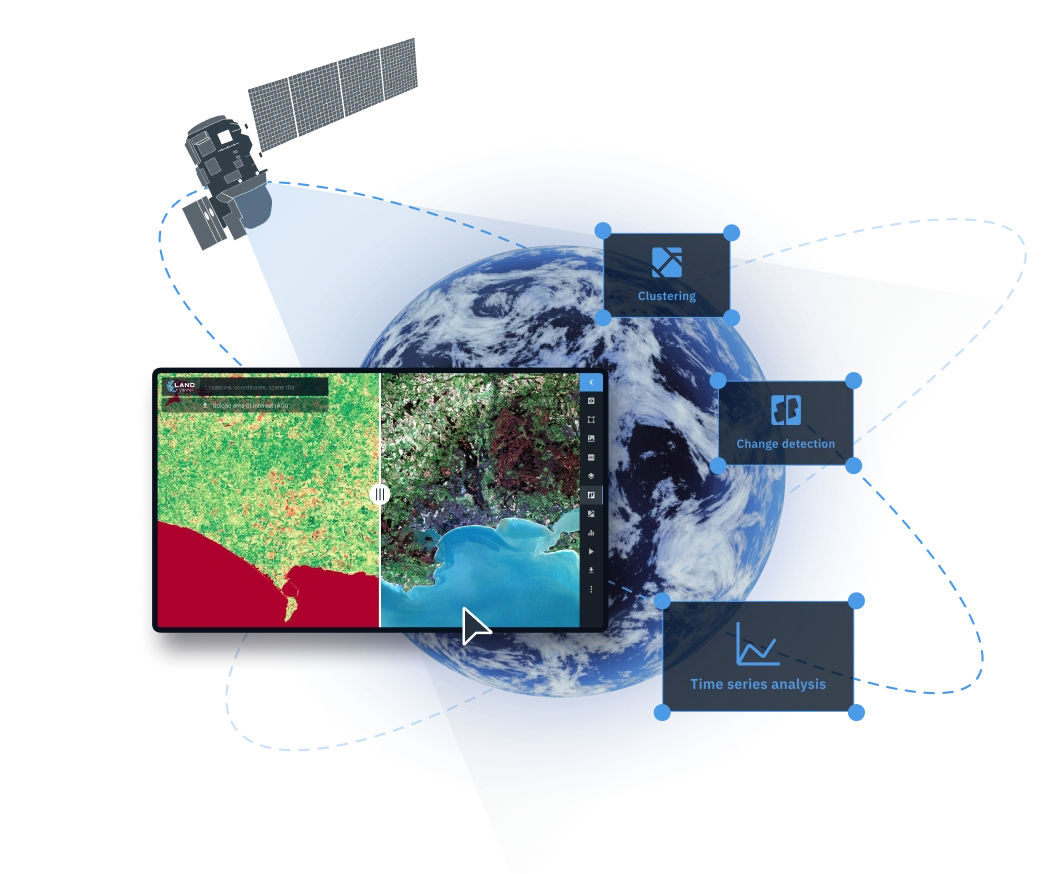
Cómo Obtener Imágenes Satelitales De Landsat 8 En EOSDA LandViewer
Defina su área de interés (AOI)
Indique el área que quiere monitorizar: busque una localización, dibuje manualmente el área en un mapa de Landsat o suba un archivo desde su dispositivo con el área ya definida.
Perfile y mejore la búsqueda usando los filtros
Utilice los filtros para ajustar su búsqueda y encontrar fácilmente imágenes satelitales de Landsat 8 relevantes en función de la fecha, la nubosidad, el sensor y la cobertura del área de interés.
Elija la imagen de Landsat 8 que coincida con sus criterios
Examine las imágenes de Landsat 8 que coinciden con sus filtros y seleccione aquella que se ajuste a los objetivos de su proyecto.
Exporte los datos o realice análisis en la plataforma
Una vez haya encontrado los datos más relevantes, puede descargar las imágenes de Landsat 8 en formato GeoTIFF, KMZ o JPEG para su procesamiento en software de terceros (por ejemplo: QGIS o ArcGIS). También puede realizar análisis directamente en EOSDA LandViewer utilizando los índices y combinaciones de bandas incluidos o herramientas de análisis avanzadas, como la detección de cambios, el análisis de series temporales y la agrupación de datos (clustering).
Establezca avisos por correo electrónico para saber cuándo hay nuevas imágenes
Si las imágenes de Landsat 8 no son lo suficientemente relevantes o necesita más imágenes en el futuro, active las notificaciones para recibir actualizaciones cuando aparezcan nuevas imágenes para su zona.
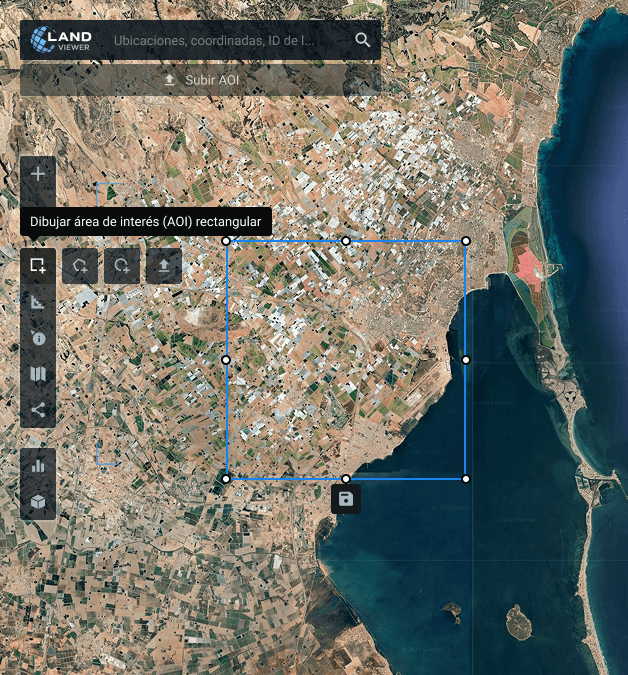
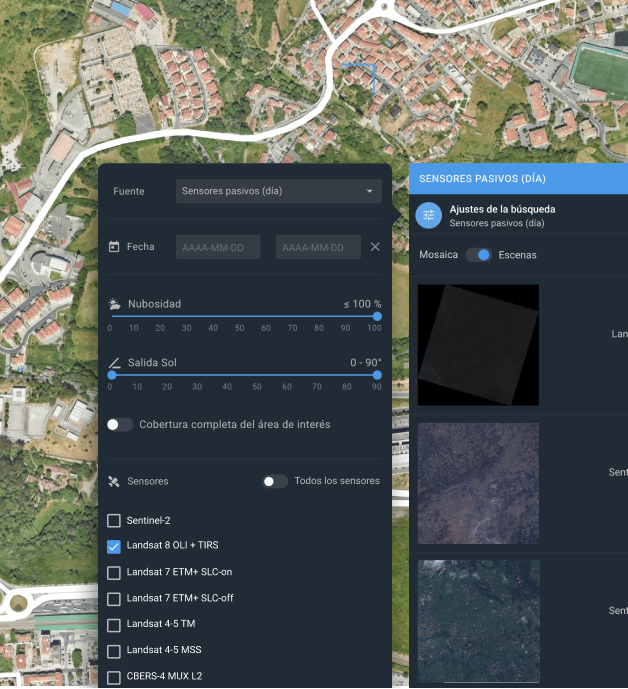
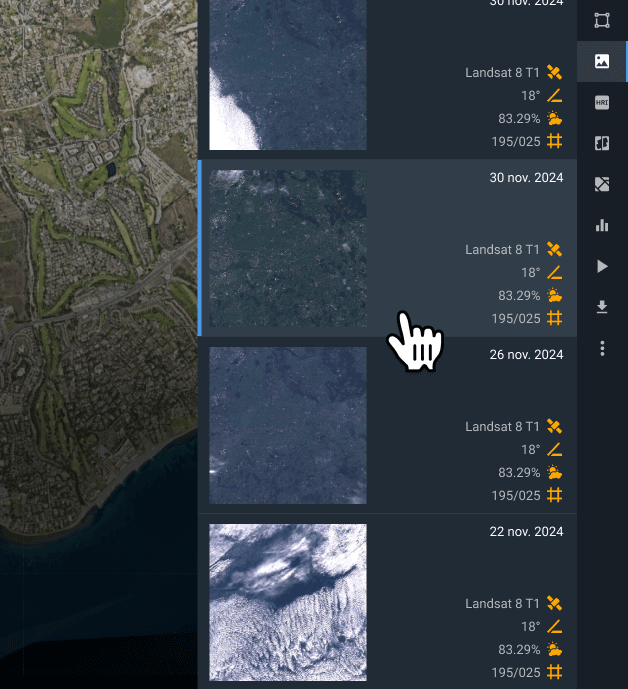
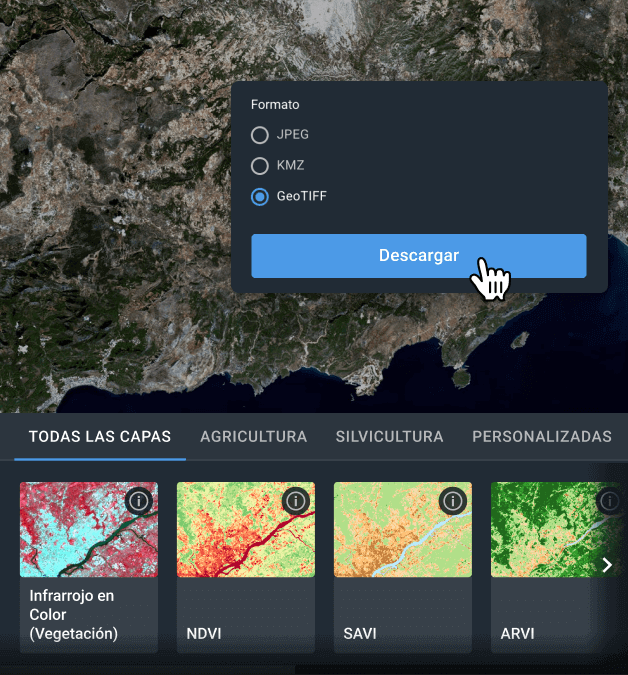

Extraiga Información Valiosa De Las Imágenes De Landsat 8 Con EOSDA LandViewer
Índice Y Combinaciones De Banda
Para un reconocimiento preciso de las características captadas por las imágenes de Landsat 8, ajuste la selección de bandas espectrales en función de sus objetivos de análisis. EOSDA LandViewer incorpora más de 20 índices y combinaciones de bandas diseñados para proporcionar información sobre las condiciones de la vegetación, las características del suelo y las alteraciones medioambientales. Si ninguna de las opciones preestablecidas satisface sus necesidades específicas, puede crear y aplicar índices personalizados

Detección De Cambios
Monitorice los cambios en las características del terreno comparando varias imágenes satelitales de Landsat 8 tomadas en distintos momentos. No importa si se trata de estudiar el desarrollo urbano, los procesos ecológicos o las consecuencias de una catástrofe, la tecnología de detección de cambios proporciona a los responsables de la toma de decisiones información para la gestión del riesgo y una planificación sostenible.
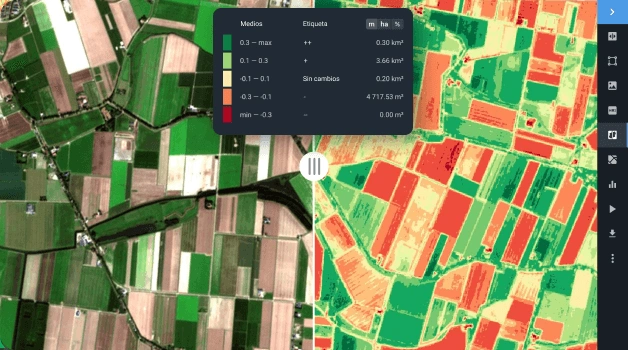
Análisis De Series Temporales
Analice las tendencias a lo largo del tiempo generando gráficos espaciotemporales para su área de interés. Aplique los índices más relevantes de nuestra amplia gama para detectar cambios en el paisaje, los ciclos de vegetación o el impacto humano. Esta herramienta examina los datos de Landsat 8 a través de múltiples marcos temporales para remarcar las tendencias a largo plazo, las fluctuaciones estacionales y el ritmo de la urbanización, fomentando una mejor planificación y uso de los recursos en todos los sectores.
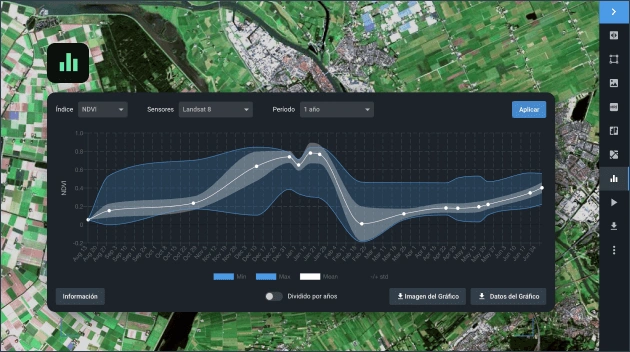
Agrupación De Datos (Clustering)
Obtenga una comprensión más profunda de la situación estructurando los datos ráster sin procesar de Landsat 8 en zonas significativas y claramente definidas con valores de índice compartidos mediante clusterización y vectorización. Estos algoritmos generan dos nuevas capas dentro de su área de interés, que ayudan a detectar patrones ocultos en la vegetación, monitorizar las condiciones del agua y realizar un seguimiento de los cambios en la cubierta terrestre. Industrias que van desde la agricultura a la conservación costera pueden beneficiarse de los conocimientos de la agrupación de datos.
